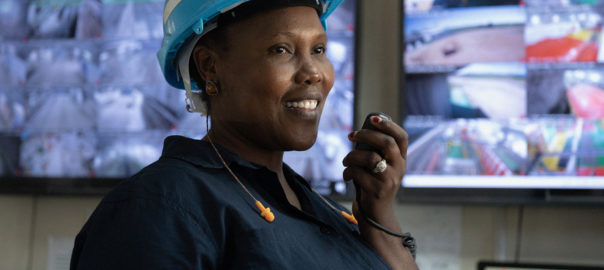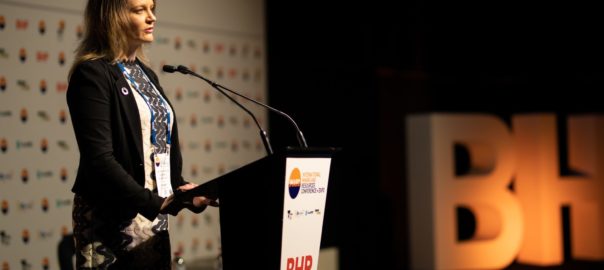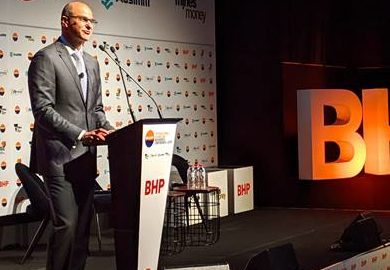Today, ICMM is announcing a new collective commitment by members to improve diversity, equity and inclusion (DEI) in the mining and metals industry and positively influence the communities that mining companies are a part of.
ICMM members have committed to work together to improve the experience of all workers and eradicate discrimination, harassment and assault from the workplaces. To achieve this, the following four actions will be taken by the end of 2024:
- Accelerate action – Accelerate individual and collective action to eliminate harmful behaviours from our workplaces and communities. This includes developing a roadmap which will outline the direction of the actions being taken and set out key milestones to help achieve agreed goals;
- Set goals – Set individual and collective goals, relevant to operating contexts, to eliminate all forms of harassment and discriminatory behaviours. This will help to demonstrate progress;
- Increase transparency – Disclose aggregated performance against these goals in accordance with ICMM’s Social and Economic Reporting Framework. This includes disaggregating data by gender and ethnicity, where possible, helping to assess the progress being made; and
- Collaborate for greater effect – Work together with companies, industry associations, underrepresented groups, communities, investors, and others to advocate for and find solutions to the challenges relating to DEI in the industry.
Rohitesh Dhawan, CEO and President of ICMM, said: “Whilst we have seen good progress by individual companies, this collective commitment aims to prioritise and accelerate collaborative efforts to eliminate discrimination, harassment, and assault. This is so we can build psychologically safe and truly diverse, equitable and inclusive workplaces in the mining industry. It is not only our solemn duty to do so, but the only way to attract and retain the talent essential to grow responsible mining at the huge scale that is required. This is why I am calling on the wider industry, alongside our members, to join us in this collective effort to drive the progress needed.”
Tom Palmer, CEO of Newmont and Chair of the ICMM Council Social Performance Council Advisory Group, said: “Demonstrating our commitment and taking action on these critical issues is aligned with our vision of safe, inclusive, and sustainable workplaces. No one should ever feel harassed, threatened, or discriminated at work. We know our actions are key to earning the trust of our employees and stakeholders. We must ask ourselves the question – what more can I personally do and what more can we do together? Working collectively as a membership and with others to overcome the barriers to diversity, equity and inclusion, we can eliminate harmful behaviours from our workplaces, and influence positive cultural change in communities and across society.”
Elizabeth Broderick, Special Rapporteur and Independent Expert for the UN Working Group on Discrimination Against Women and Girls, said: ““If we don’t actively and intentionally include women, the system will unintentionally exclude them. The reason for this is that the systems in the mining industry were invented by men, for men and even today are largely run by men. Forcing women into systems and cultures designed for men is not an effective strategy to build greater levels of diversity and inclusion. The solution lies in shifting the systems rather than fixing the women.”
Andy Mason, Head of Active Ownership at abrdn, said: “I’ve already seen positive steps being taken by the mining industry to address diversity and inclusion challenges. This commitment by ICMM members takes it one step further and helps to demonstrate collective action being taken by some of the world’s biggest miners. To keep this momentum going, continued collaboration between the industry and investors is critical. As active owners we must work with investee companies to support and encourage efforts to address challenges. Our future depends on the metals and minerals the industry produces.”
This Position Statement builds on the individual company requirements which were updated in June 2022 and represents a joint ambition from companies that make up one-third of the global mining and metals industry.
ICMM members, the ICMM says, are united in the belief that discrimination, harassment and assault have no place in the industry or anywhere else in society. Members acknowledge their duty and the increased effort required, to remove the inequalities within the industry, and to help eliminate harmful behaviours that exist in society.










